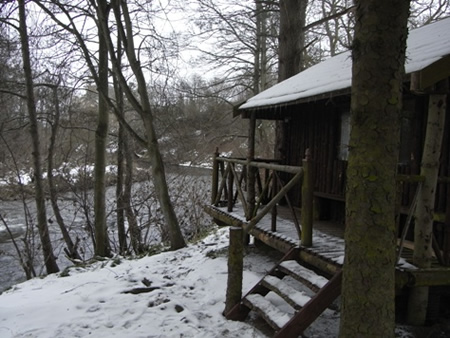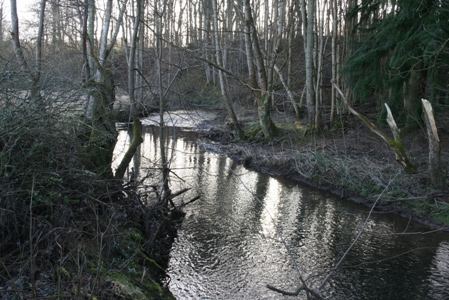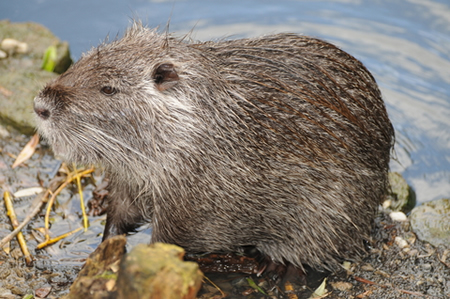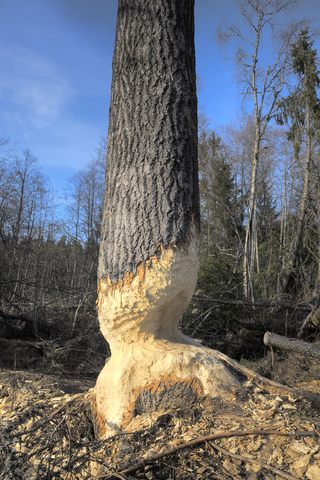These bulletin blogs represent news about Finavon and the South Esk, and my views as a riparian owner. They are not the views of any other organisation, nor are they designed to promote the interests of any individual or organisation other than Finavon Castle Water and factors affecting the fishery. Tony Andrews
It may be useful for some of my readers to see how AST has responded to the enquiry about putting turbines on each side of the channel beneath the new bridge in Montrose. The South Esk is of national importance as a model stock management river for Scotland, as an SAC, as a priority catchment for managing agricultural diffuse pollution and run off, as the recipient of considerable amounts of public funding for fencing Glen Clova and restoring the Rottal Burn. The River is also unfortunately often in the news because the South Esk District is the locus of the EU’s most damaging mixed stocks netting station at Usan, just south of Montrose. With all that as background one can hardly imagine that the proposal to install two sets of 2-way tidal turbines at the exit of the South Esk from Montrose Basin would be given any serious consideration. I fear that my optimism may be misplaced.
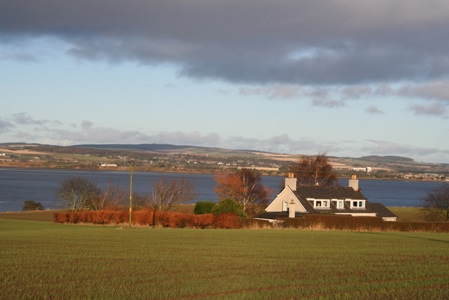
Montrose Basin from South side
I apologise for not putting the graphs accompanying these papers onto the website, which is entirely because of my useless skills when dealing with technology. If anyone waqnts the graphs please e-mail me at colonsay@hotmail.com .
Dear Mr McKie
On behalf of the Atlantic Salmon Trust (AST), I wish to comment on GSK’s application for a marine generation licence to generate power from 15 tidal turbines placed at the outlet of Montrose Basin on either side of the bridge.
The AST was founded in 1967, and exists to promote the wellbeing of native Atlantic salmon and sea trout. The Trust wishes to object to this application. Of particular concern is the dismissive tone throughout GSK’s Environmental statement when referring to impacts on migratory salmonids.
The AST has sought the views of two eminent and highly experienced fishery scientists – Dr David Solomon, a member of the Trust’s Scientific Advisory Panel, and of Professor Ken Whelan, AST’s Director of Research. Their responses are attached to this letter as Appendices 1 and 2.
You will note that Dr Solomon expresses specific concerns over how calculations of likelihood of physical damage to salmon and sea trout were made. Professor Whelan feels that permitting such a development would run contrary to the UK Government’s obligations under the EU Habitats Directive.
AST believes that permitting construction of such an array within an SAC would set a most dangerous precedent, and would fly in the face of commitments to protect and enhance biodiversity. We regard this proposal as a high risk venture with the potential to put at risk the rich biodiversity of Montrose Basin as well as the species qualified by the South Esk’s SAC status.
Following our telephone conversation on Monday, we agreed that I might also draw to your
attention that I am the owner of the Finavon Castle Water www.finavoncastlefishing.co.uk
in which I am involved in active fishery management. I also chair the South Esk Catchment Management Partnership which is a publicly funded initiative to maximise the social, environmental and economic benefits of the South Esk and its tributaries to local communities.
You may also be interested to refer to the Environment Agency decision not to support Eastleigh Council’s application for a hydropower scheme on the River Itchen, which, like the South Esk, is also an SAC. I recognise that the technical aspects of the Eastleigh Council proposal are different from that of GSK, but it does engage the principle of dealing with risks to SAC rivers.
Yours sincerely
APH Andrews,
Chief Executive, Atlantic Salmon Trust

Both bridges at Spring low tide
Appendix 1
Comment on the GSK Tidal Array project
Environmental Statement by Dr David Solomon,
Fisheries Consultant., Member of AST Scientific Advisory Panel
I am a fisheries consultant with more than 40 years’ experience of assessing the impact of various engineering schemes, such as HEP, harbour construction, river regulation and abstraction on salmon and freshwater fish. In 1988 I researched and produced a report for the UK Department of Energy on fish passage through tidal energy barrages (Solomon 1988), and have maintained a professional interest in fish passage through turbines since that time.
On April 18 I was asked by the Director of the Atlantic Salmon Trust, as a member of the AST
Scientific Advisory Panel, to comment upon the GSK proposal. I have seen only Chapter 14 of the
Environmental Statement and my comments are limited to the subject of mechanical strikes by turbine blades on adult salmon and sea trout. Other major concerns may exist but I do not
comment on them due to lack of time.
It is generally accepted that the greatest risks of fish being damaged by passage through low head (including tidal) turbines comes from mechanical strikes by fixed and moving parts of the machinery (Solomon 1988, Turnpenny et al 1992). The GSK Environmental Statement dismisses this as a major risk with this scheme because it is concluded that:-
- the frequency of collisions between adult salmonids and turbine blades will be low; and
- the consequences of such strikes will be negligible.
I am concerned by both these conclusions.
The low frequency of predicted strikes is surprising, and I would like to see details of the calculations that led to this conclusion. Presumably it is based upon only a small part of the cross section of the flow passing within the swept area of the turbine blades, but in the ES it is stated that, as a worst-case scenario, all fish are assumed to pass though the “risk window”. What assumptions were made about the orientation and swimming behaviour of the fish was they passed through the area swept by the blades?
Why was a model based upon bird strikes in wind turbines used, rather that established models for fish such as those described by Solomon (1988) and Turnpenny et al (1992)?
The assumption that the consequences of strike will be negligible is apparently based upon a report by Wilson et al in 2007. I am not familiar with either this report or Wilson, but in my view this conclusion is dangerously wrong with respect to adult salmon and sea trout. This is because fish size is critical to the assessment of damage done by blade strikes, and most of the experimental work undertaken has been on small fish.
Probably the most authoritative assessments undertaken have been those by the Steve Amaral
and his colleagues at the Alden Research Laboratories in the USA. These studies are alluded to, but in my view misinterpreted or misrepresented, in the ES. The Alden Lab investigations have involved examination of the consequences of runner blade strike (as opposed to strike probability) with respect to collision velocity, fish size and blade geometry. (Amaral et al
2008). They have used a range of fish sizes up to 250 mm for rainbow trout, 170 mm for white sturgeon and 300 mm for American eels. This is a most valuable programme of work and its results, and potential for further investigation, are of great application for assessing potential impacts of tidal power generation. A major focus has been the observation that blade geometry and fish size greatly affect strike damage. Blade profiles with a semi-circular leading edge were used, and the ratio of the fish length (L) to blade thickness (t) was observed to be critical. The main findings can be summarised:-
- Mortality of all sizes of fish tested (up to 250 mm for salmonids) was low at collision speed up to about 5 m/sec (See Figure1);
- Mortality of small fish, with an
L/t ratio of one or less, remained low even at collision speeds up to 12m/sec;
- For fish with an L/t ratio above 1, mortality increases sharply with increasing collision speed above 5m/sec and with increasing L/t ratio (Figure 1).
- Rainbow trout are more vulnerable to impact damage than sturgeon and eels of equivalent length presumably due to anatomical differences.
Figure
1. Survival rates for fish in the Alden
blade-edge experiments. See text for
explanation. This suggests that there is scope to minimise strike mortality for smaller fish through
limiting runner speed and by designing-in a blade thickness of the same order as the length of the fish. The latter is however clearly not practicable as an approach to reducing the impact upon
adult salmon and sea trout. Further, it is doubtful if these results (obtained with fish up to 250 mm) can be directly
extrapolated to fish of significantly larger size than those used in these
trials; the mass of a fish increases as the cube of its length. Thus an adult salmon of 750 mm, being three
times the length of a 250 mm fish of similar shape, will weigh 27 times as
much. It must be concluded that a mechanical strike involving relative speeds
even as low as 5 m/sec is likely to cause serious injury to adult salmon and
sea trout.
The most relevant UK investigation on strike damage was undertaken by Turnpenny et al
(1992). They conducted most of their tests at with strike velocities of 5-7 m/sec, similar to the upper part of the range for the turbines in the GSK proposal. For their live fish tests they used a range of fish species including a salmonid (brown trout up to 225 mm). In fact little damage was apparent when the fish were struck at these speeds by a larger-diameter (about 60 mm radius) curved face such as was proposed as the likely profile of the hub-end of the leading edge of a large blade. However, smaller diameter leading edges (about 15 mm radius and below, typical of a turbine blade over most of its length) caused “significant, and in most cases severe, damage”. These observations are broadly consistent with the results reported above by Amaral et al (2008).
Fish size and weight affect the likelihood and consequences of collision by more than just the increase in length. The situation is best explained by quoting from Turnpenny et al:-
“The behaviour of the fish bodies is explained in qualitative terms, as follows. The water approaching the blade leading edge divides and moves laterally to pass around the blade. Solid particles suspended in the water approaching the front of the blade will tend not to follow the stream lines around the blade but to continue, owing to their inertia, along their original
trajectory. This tendency will be opposed by the sideways drag of the water, and whether or not the particle strikes the blade will depend upon the balance between drag and inertial forces. Fish are affected in the same way, so thatsmall fish (of a few grams weight) can be seen to be swept around the front of the blade, whereas large fish collide due to their inertia.
Fish of less than 20g were generally swept aside by the water around the blade, unless
the centre of gravity fell within the blockage path of the blade. Even then, only a small proportion (13.7%) were hit; generally those where the centre of gravity aligned closely with the
blade centre-plane.
For fish of higher mass, collision is more likely due to the inertial effect. Note that fish length has been factored out of this analysis. Fish of up to 200g have around a 75% chance of being struck when the centre of gravity coincides with the blade width, and heavier fish a 100% chance. The strike probability declines with distance, falling to zero when the offset is more than 0.4 of the projected body length. For most species the centre of gravity lies between 0.4 and 0.5 body lengths behind the snout. Beyond 0.4 body lengths in front of the centre of gravity, the tip of the snout is either very close to, or clearing the blade; at the same distance behind the centre, the tail of the fish is flexible and of low mass, and tends to follow the rest of the fish during a strike rather than wrapping around the blade.”
These results and observations indicate the danger in extrapolating results obtained for small fish to draw conclusions regarding the wellbeing of larger fish.
The Environmental Statement was prepared by Swanturbines, a company which, according to its
website “develops tidal stream turbines for the emerging marine renewable energy market”. It further states that “having also recently carried out site development activities for clients
including a large UK PLC, the team has led one of the world’s first tidalstream site developments on the east coast of Scotland”. The website also records that the person instrumental in delivering the GSK Montrose Environmental Impact assessment has been a project manager with “ten years of professional experience in a range of disciplines from aerodynamics to electronic design”. The author does not appear very familiar with the literature on fish passage through turbines. This does not give confidence that the environmental statement is an independent assessment conducted by suitably-qualified environmental scientists.
Given that this proposal represents “one of the world’s first site developments” of this technology, it seems particularly inappropriate that the location chosen in at the mouth of
a river that has been declared an SAC with Atlantic salmon as one of twospecies cited as the primary reason for its selection.
References.
Amaral S V, Hecker G E and Stacy P (2008) Effects of leading edge turbine thickness on fish strike survival and injury. Paper 250 presented at Hydrovision 2008.
Hecker G E, Amaral S V and Stacy P (2007) Developing turbine blades to minimize fish mortality. Paper 097 presented at Waterpower XV.
Solomon D J (1988a) Fish passage through tidal energy barrages. Department of Energy,
Energy Technology Support Unit, ETSU TID 4056, 63 +13 pp.
Turnpenny A WH, Davis J, Fleming J M and Davies J K (1992) Experimental studies relating to the passage of fish and shrimps through tidal power turbines. AEA Technology, Harwell, and National Power. 45 pp plus figures and tables.
Appendix 2
Comments by Professor Ken Whelan,
Director of Research, Atlantic Salmon Trust., Adjunct Professor in the School of Biology and Environmental Science at University College Dublin, Former Executive Director of the Marine Institute, Former President of NASCO, Former Chairman of the International Atlantic Salmon Research Board
I share the concerns and reservations of Dr David Solomon in regard to this proposal.
In the case of sea trout the application appears to assume that the only period of risk is while the smolts are migrating and the adults are returning to the river. It is essential to bear in mind that the estuary area of the South Esk may well be used as a feeding zone. not only by fish originating from the South Esk but also from neighbouring rivers. Clearly, this will increase the risk of direct impact with the turbines, and the number of fish likely to be at risk.
The proposed array could also adversely affect the food sources for sea trout.
Although the Environmental Statement concludes that the impact of the electromagnetic field caused by the power transmission cable is likely to be less than that of an existing subsea cable, there is a considerable degree of doubt about the disruption which such electromagnetic fields cause to migratory fish, particularly if these occur at low tide or in low water situations. The risks
to salmon, in particular, caused by electromagnetic fields should not therefore be dismissed as ‘minor’.
The South Esk is designated as an SAC because of the importance of populations of freshwater
pearl mussels and Atlantic salmon, but is also important for other keystone,non-salmonid species such as lamprey, shad and eel. These are species of high biodiversity value which could be put at
risk by the proposed development. The UK is obliged to take account of the new EU Biodiversity Targets – i.e. stemming the loss of biodiversity by 2020. As such the Scottish authorities should be conserving sites of high biodiversity value such as the South Esk and its estuary.
In particular there is increasing concern regarding the current status of eel and shad stocks. Recent work has shown that estuaries around Europe may hold very significant stocks of the freshwater eel and as such serve as an important refuge and recruitment area. In addition to concerns relating to feeding eels in the estuary, the planned array could pose a threat to migrating elvers/glass eels and to adult silver eels. Eel stocks are at a particularly low level and it is vitally important that recruitment to the adult stage is maximised. Shad spawn on the river bed at the head of the tide and the planned array could pose a significant threat to shad, which are shoal fish, both in the adult and juvenile stages.
